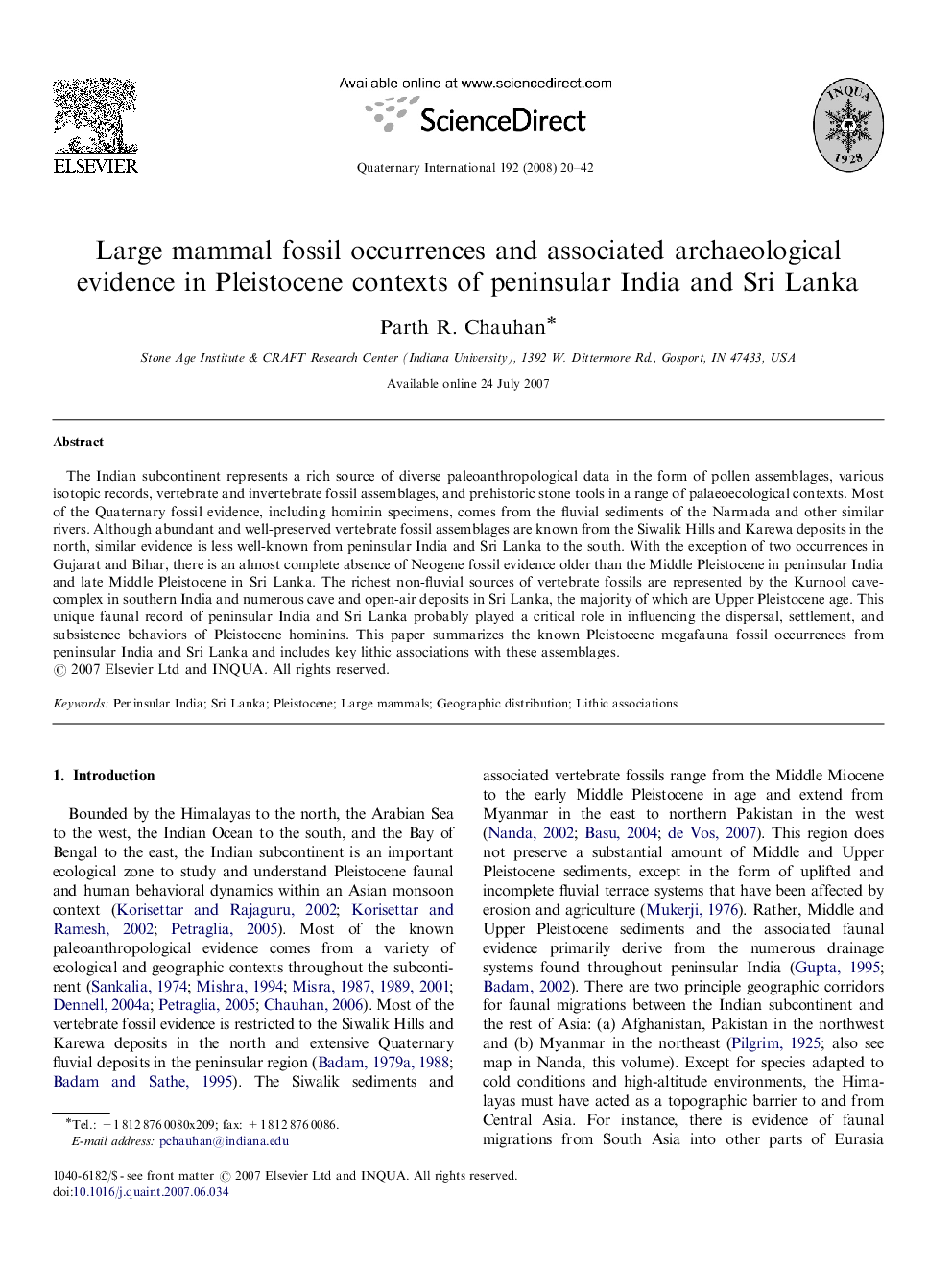| Article ID | Journal | Published Year | Pages | File Type |
|---|---|---|---|---|
| 1044308 | Quaternary International | 2008 | 23 Pages |
The Indian subcontinent represents a rich source of diverse paleoanthropological data in the form of pollen assemblages, various isotopic records, vertebrate and invertebrate fossil assemblages, and prehistoric stone tools in a range of palaeoecological contexts. Most of the Quaternary fossil evidence, including hominin specimens, comes from the fluvial sediments of the Narmada and other similar rivers. Although abundant and well-preserved vertebrate fossil assemblages are known from the Siwalik Hills and Karewa deposits in the north, similar evidence is less well-known from peninsular India and Sri Lanka to the south. With the exception of two occurrences in Gujarat and Bihar, there is an almost complete absence of Neogene fossil evidence older than the Middle Pleistocene in peninsular India and late Middle Pleistocene in Sri Lanka. The richest non-fluvial sources of vertebrate fossils are represented by the Kurnool cave-complex in southern India and numerous cave and open-air deposits in Sri Lanka, the majority of which are Upper Pleistocene age. This unique faunal record of peninsular India and Sri Lanka probably played a critical role in influencing the dispersal, settlement, and subsistence behaviors of Pleistocene hominins. This paper summarizes the known Pleistocene megafauna fossil occurrences from peninsular India and Sri Lanka and includes key lithic associations with these assemblages.
